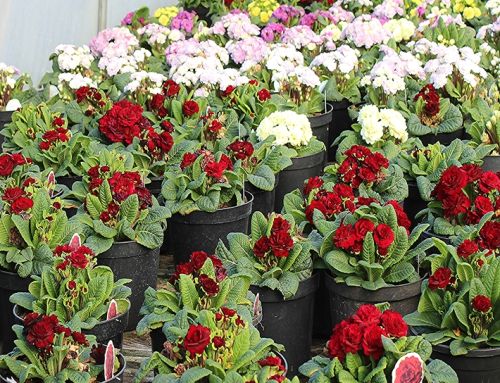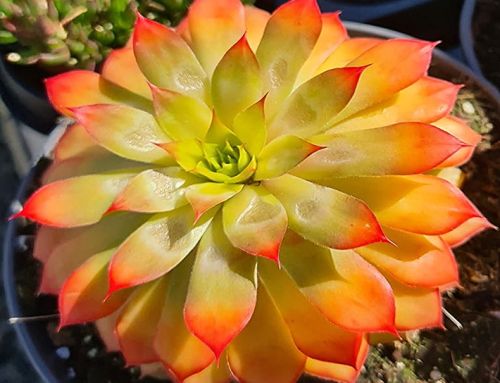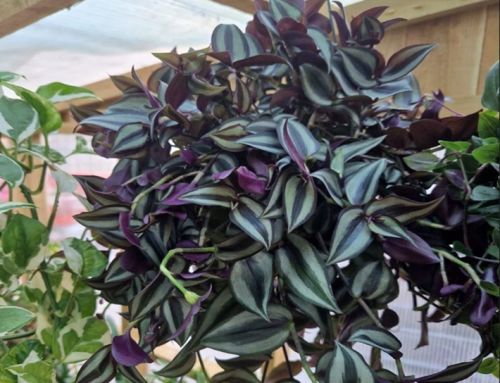Growing Blueberries in your garden
Often labelled as a superfood, Blueberries are proving to be one of the nation’s favourite fruits. They are sweet, nutritious, low in calories and so good for you. These little balls of wonder are packed full of nutrients such as Fibre, Vitamin C, Vitamin K, and Manganese. They are also made up of 85% water so will make a great low calorie snack. Of all the common fruit and veg Blueberries are believed to have one of the highest antioxidant levels. Antioxidants protect your body from free radicals (unstable molecules that can damage your cells) therefore helping combat the aging process and diseases and reduces DNA damage. These same antioxidants are strongly linked to reducing the levels of LDL Cholesterol, lowering blood pressure, and lowers the risk of heart attack so they are very good for your heart. They have been proven to help maintain brain function and improve memory too. Although they are quite high in natural sugar, the anthocyanins can improve insulin sensitivity and glucose metabolism in those who may be at risk of Type 2 diabetes. As Blueberries are closely related to Cranberries they have many of the same active substances, and these anti-adhesives help prevent bacteria binding to the wall of the bladder which can help prevent Urinary Tract Infections. It is no wonder then, with all the health benefits attached to Blueberries that we are seeing a rise in their popularity. However, their popularity combined with their reputation as a wonder fruit has made them quite an expensive choice on the supermarket shelves.

 So, why not grow your own? They are a reliable and super easy shrub to grow and each plant will produce pounds and pounds of delicious Blueberries. As well as the huge health benefits of the berries, they are excellent as a stand alone plant, producing masses of lily-of-the-valley like flowers and having glorious autumn colours making a lovely addition to the aesthetics of the garden.
So, why not grow your own? They are a reliable and super easy shrub to grow and each plant will produce pounds and pounds of delicious Blueberries. As well as the huge health benefits of the berries, they are excellent as a stand alone plant, producing masses of lily-of-the-valley like flowers and having glorious autumn colours making a lovely addition to the aesthetics of the garden.
About the Plant
These perennial flowering plants are classified in the genus Vaccinium that also includes Cranberries and Lingonberries. The Blueberries generally grow on two different types of bush, the wild lowbush variety and the cultivated highbush variety. They can vary in size from 10 cms to 4 metres. Blueberries reproduce by cross-pollination (although you can get some self-fertile varieties, they will do better with other pollinators), with each seed producing a plant with a different genetic composition. This causes differences in growth, productivity, colour, leaf characteristics, disease resistance and flavour within the same species.
The mother plant develops underground stems called rhizomes, which form a network of rhizomes creating a large patch (a clone). The plant itself will have fruiting buds and vegetative buds. The fruiting buds will give rise to 5-6 flowers followed by the fruit, a berry 5-16mm in diameter with a flared crown at the end. The berries are a pale green, turning reddish purple and then finally blue when ripe. The berries are covered in a protective coating of powdery wax known as the ‘bloom’. The vegetative buds produce the leaves that are dark green during the growing season and as the weather cools, the leaves will turn red producing its spectacular autumn foliage.
Site and Soil
Plant in a moist, well-drained acidic soil in a sunny sheltered spot. Although Blueberries are tolerant of shade, you will get much better crops in the sun. The soil acidity needs to be pH 5.5 or lower. Add plenty of acidic matter to your soil in advance such as pine needles or composted conifer clippings. However, avoid farmyard manure, as this is too rich for their fine, fibrous roots.
If your soil pH is higher than 5.5 then you would be better off planting in containers with ericaceous compost. To grow in a container, choose one that is at least 30cm (12”) for young plants, moving to a bigger one 50cm (20”) when it outgrows the first one. Ideally, you would grow a compact variety for pot cultivation.
For best results plant your Blueberries 1m(3’) apart to allow for spread, and maybe a little more depending on the cultivar. While the plants will provide a good crop on their own, it will yield much more heavily if planted near another, different cultivar.
Caring for your Blueberry Plant
Keep the soil or compost moist, but not soaking wet and do not allow it to dry out between waterings. One top tip is to water with rainwater when you can as tap water can make the compost more alkaline over time. If planted in the ground they will not need feeding apart from an annual ericaceous mulch. Blueberries are sensitive to overfeeding. For container plants an ericaceous liquid fertiliser once a month is sufficient.
Pruning
There is no real need to prune in the first two years other than to remove any crossing or misplaced branches. After that though, to ensure your plant remains productive you will need to prune them every spring around February or March while the plant is dormant.
It is a straightforward process. You want to ensure that your plant always has a good selection of productive red stems with the rounder fruit producing buds on. The fat fruiting buds produce flowers and fruit while the smaller, flatter vegetative buds form shoots and leaves. Cut back the oldest stems to ground level each year to encourage new stems to be produced. At this time, also prune out any dead or damaged stems and low horizontal stems close to the ground. You are aiming for a constant process of rejuvenation and a mature plant will have one-third young stems, one-third middle-aged and one-third old.
Common Problems & Pests
Birds – Birds are the main pest! they will eat the fruit and buds on your plant, a scarecrow may help temporarily but the best defence is covering them with taut netting, mesh or fleece so that they can’t get to them.
Aphids – Check the leaves or the soft shoot tips of plants for colonies of greenfly. You can use your finger and thumb to squash them or a biological aphid spray that is safe to use on fruit. If left the aphids will suck sap and excrete sticky honeydew which encourages the growth of black sooty moulds.
Powdery Mildew – This appears as white powdery deposits on the leaves, which can cause the leaves to shrivel and become stunted. If you spot this, then move to a cooler location and keep the soil moist.
Harvesting Blueberries
Fruits start to ripen from mid-summer onwards, changing colour from green to dusty blue/purple. At this point they can be harvested. You will need to pick over your plants several times as not all fruit ripens at the same time. The Blueberries can be eaten fresh, dried to make a lovely snack, or frozen for later use. They can be used to make jam or compotes, baked in cakes and muffins, made into smoothies or juices.
Blueberry Varieties
Blueberry ‘Bluecrop’ – The ‘bluecrop’ is considered to be one of the most reliable. Pretty clusters of lily-of-the-valley l ike flowers appear in spring followed by its edible blue berries in late summer and its attractive bright leaf colour in autumn. It has an upright habit.
ike flowers appear in spring followed by its edible blue berries in late summer and its attractive bright leaf colour in autumn. It has an upright habit.
Blueberry ‘Bridgitta’ – ‘Bridgitta’ is a late season variety and produces large, light blue fruits which can be harvested end of August. These fruits have a crisp texture that makes them ideal for freezing.
Blueberry ‘Chandler’ – This variety is self-fertile but works best with a pollinator. A mid-late cropping variety produces a heavy yield of huge dark blue fruits.
 Blueberry ‘Coville’ – This cultivar produces larger than average berries with a good sweet flavour. Ready to harvest in August
Blueberry ‘Coville’ – This cultivar produces larger than average berries with a good sweet flavour. Ready to harvest in August
Blueberry ‘Dixi’ – This variety is a consistent heavy cropper of large succulent late ripening berries. Harvest late August/September.
Blueberry ‘Elliot’ – This is a self-fertile variety but will work best with other pollinators. Medium berries with an exceptional flavour can be harvested July-August.
Blueberry ‘Goldtraube’ – ‘Goldtraube’ produces large firm fruit with an aromatic flavour. Berries ripen July-August.
Blueberry ‘Heerma’ – A mid-late season variety that produces large, light blue fruits towards the end of August.
Blueberry ‘Hortblue Petite’ – Ideal for container growing, this dwarf form plant bears clusters of delicious berries twice in the season, once in July followed by another crop in September. It is also self-fertile but works best with other pollinators.
Blueberry ‘North Sky’ – Another self-fertile dwarf, mid season cultivar. It produces an abundance of exceptionally flavoured berries.
Blueberry ‘Ozarkblue’ – harvest in July/August. Large berries with exceptional flavour on an upright bush.
 Blueberry ‘Pink Lemonade’ – This one is special. A new deep PINK Blueberry! A mild flavoured berry with a firm texture. Self-fertile but works best with another pollinator.
Blueberry ‘Pink Lemonade’ – This one is special. A new deep PINK Blueberry! A mild flavoured berry with a firm texture. Self-fertile but works best with another pollinator.
Blueberry ‘Pioneer’ – An early to mid cropping plant with medium sized dark blue fruits. Self-fertile but best with a pollinator.
Blueberry ‘Reka’ – An excellent mid/late cropping cultivar with huge, dark blue fruits. Self fertile but best with a pollinator.
Blueberry ‘Spartan’ – Early cropping variety with large dark fruits.
Month by Month Calendar







